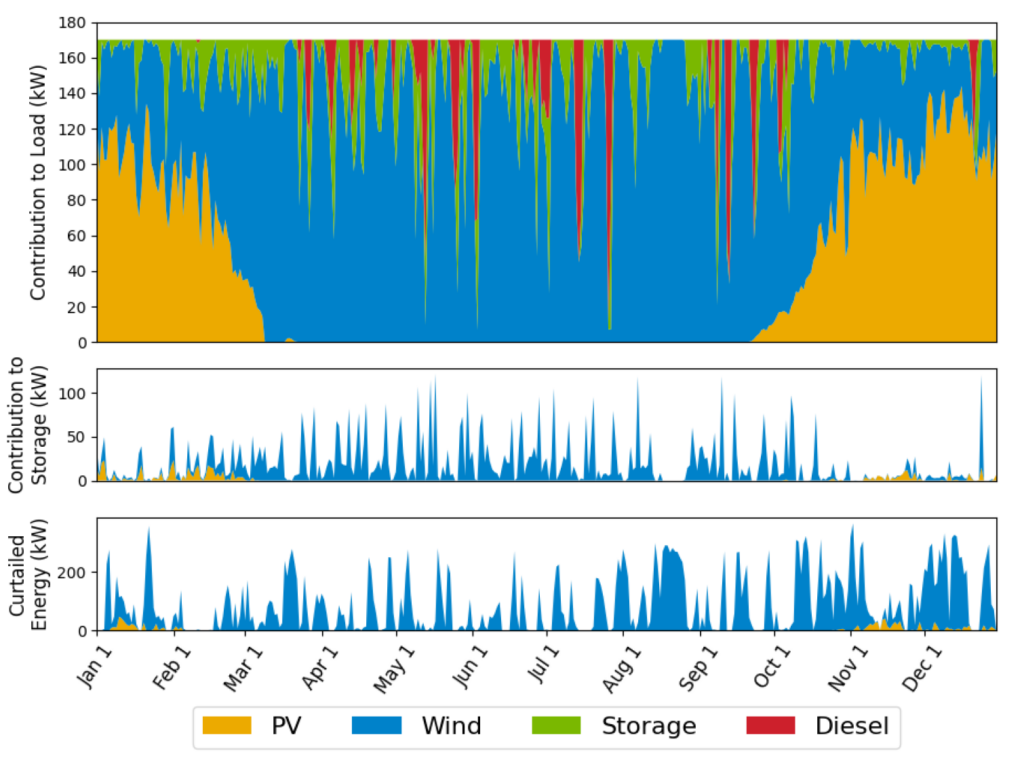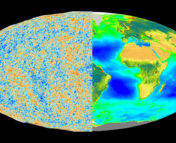Paper Title: Feasibility of Renewable Energy for Power Generation at the South Pole
Authors: Susan Babinec, Ian Baring-Gould, Amy N. Bender, Nate Blair, Xiangkun Li, Ralph T. Muehleisen, Dan Olis, Silvana Ovaitt
Status: Submitted to Renewable and Sustainable Energy Reviews, open access on arXiv
In previous Astrobites, we’ve covered how astronomy research has a large carbon footprint, and why we need to curb carbon emissions to preserve our future in astronomy and beyond. One practical solution to mitigating the climate impact of astronomical research is to consider switching to renewable energies. Using clean, renewable power has a variety of benefits: decreased carbon emissions, cleaner air and water, and many others.
But can renewable energies also be feasible in extreme locales, like the South Pole? Renewable energies have been extensively studied in moderate climates – but in remote locations like the South Pole, there are additional challenges, ranging from extreme temperatures to difficulty and cost of shipping materials.
The Amundsen Scott South Pole Station (located at the geographic South Pole in Antarctica) is home to a variety of science experiments, many of them focused in astronomy, such as the South Pole Telescope and the IceCube Neutrino Observatory, as well as others in glaciology, geophysics, biology, and others.
Currently, the station relies exclusively on diesel power for energy to support operations. Diesel is non-renewable, and is both extremely expensive and logistically difficult to transport to the South Pole station. But new innovations in renewable technologies have led today’s authors to ask the question: Can renewable energy generation –specifically from solar power and wind turbines – be a feasible and cost-effective way of generating power at the South Pole?
Energy in extreme environments
From frigid temperatures (down to -70 degrees Celsius or -94 degrees Fahrenheit) to months where the sun doesn’t rise above the horizon, the South Pole has climate conditions more extreme than most other places in the world. The authors delve into challenges that might be faced when considering a switch to solar power or wind turbines.
One of the main challenges when considering solar power is the simple fact of sun position: the sun is only above the horizon for 6 months out of the year! This means that any power generated from solar power would only be available during the Antarctic summer months (see Fig 1).

They also consider the orientation of the panels – vertical or horizontal, tilt, and spacing between panels. They find that vertical panels are less vulnerable than horizontal ones to snow pileup, but that the tilt of the panels and the spacing between panels don’t have a large overall effect on the possible power output.
For wind turbines, the biggest challenge is the temperature. The average temperature at the South Pole is -50 degrees C (-58 degrees F), and it can drop down to -70 degrees C. Most wind turbines haven’t been fully tested to this low of temperatures – the ones used in this study are only tested down to -40 degrees C. However, the authors say that these turbines could theoretically operate down to -70 degrees, which is taken as the operational limit here.
The final consideration is energy storage: what type of energy storage is optimal to store the energy generated? They consider two types of energy storage: Lithium ion, which generally has a higher energy density but is flammable and degrades with long-term use, and Long Duration Energy Storage (LDES) which is currently a rapidly developing technology. They consider both types in their analysis.
How best to power the South Pole
The authors assume a constant power requirement for the station and scientific operations of 170 kW (kilo-Watts), and look at a variety of combinations for adding renewable energies, but find that the best option is a combination of all types (solar, wind, energy storage, and diesel), used conscientiously throughout the year. The contribution from different types of power for this case and when they are best utilized throughout the year can be seen in Figure 2.

This option has many benefits. For one, it would reduce the diesel fuel required by 96% – a huge reduction in carbon emission and cost. Putting in the infrastructure would cost 10 million dollars to start, which would pay itself off in only 2 years.
In all cases – even those with either only solar or only wind, or a different combination of both – the authors saw significant improvement, and estimated a reduction in the diesel fuel required of more than 40%.
Outlook and additional challenges
This study provides an initial look at utilizing renewable energy at the South Pole station, but there are a few more considerations that need to be addressed before this can be implemented. For the solar panels, a strategy for handling maintenance, including snow piling up on the panels, is required. For energy storage, the flammability of Lithium ion storage needs to be addressed, which has added concerns due to the remoteness of the South Pole Station.
For wind turbines, there are more engineering challenges. The operating temperature is an issue (as mentioned previously), as the turbine needs to operate down to -70 degrees C, especially during the Antarctic winter months. Another challenge is that wind turbines can generate electromagnetic interference, a huge problem for radio-quiet experiments hosted in the “dark sector”, which is specifically designated as an area away from electromagnetic interference.
Overall, this paper shows that switching to renewable energy is not only feasible, but also more cost effective and environmentally responsible in the long term. Even in the most remote and extreme environments, renewable energy can pave the way to a sustainable future for astronomy.
This article was written as a part of our Climate Change Series. We’d love to hear what you would like to see from this initiative – if you have ideas, please let us know in this google form.
Disclaimer: This article was written and edited by a group of Astrobites authors. It is not intended to be representative of the views of the AAS (which supports Astrobites) or all astronomers.
Astrobite edited by: Olivia Cooper
Featured image credit: Amundsen-scott-south_pole_station_2007.jpg: U.S. Antarctic Program, National Science Foundation, Public domain, via Wikimedia Commons




